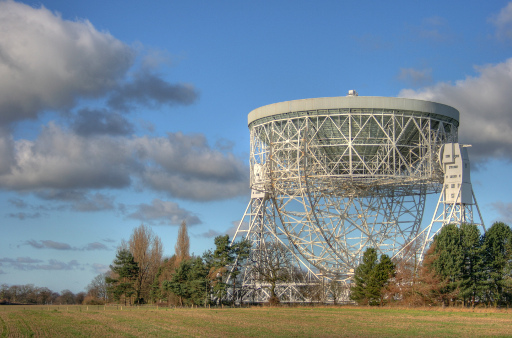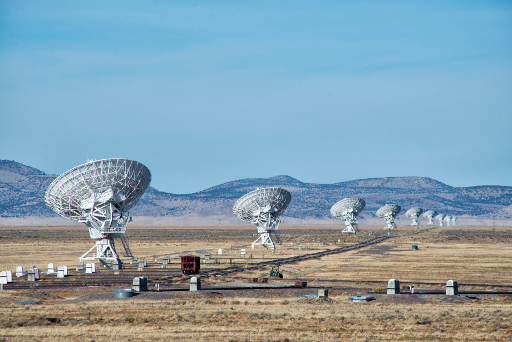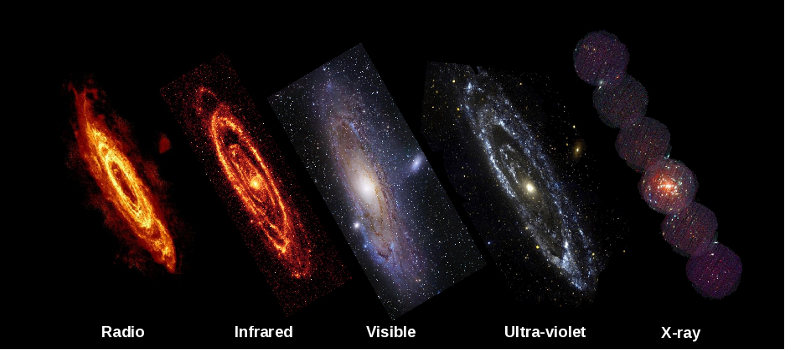Section 5.3.1: How do we hear and see the invisible Universe?
Hearing and seeing the invisible Universe
One of the most iconic sights in the English countryside is the giant Lovell Radio Telescope at Jodrell Bank, operated by the University of Manchester.

Jodrell Bank (credit: Mike Peel; Jodrell Bank Centre for Astrophysics, University of Manchester)
ACTIVITY: In the following segment from Jodrell Bank's podcast, The Jodcast, Dr Stuart Lowe talks to Dr Tim O'Brien about the sounds of space, and plays various examples, as ‘heard’ by radio telescopes.
jodcast sounds of spaceAudio player: 20080817-jodcast-soundsofspace.mp3(credit: The Jodcast, Jodrell Bank, University of Manchester)
ACTIVITY: To appreciate how radio astronomers form images of astronomical objects, try the following activity, designed by the National Radio Astronomy Observatory (NRAO) in the USA. First download one or both of the datasheets here and print them out: sheet1, sheet2
As you can see, these ‘images’ consist of lots of little squares (pixels) each of which contains a number. These represent the intensity of radio waves detected from various points in space. In order to obtain data like this, a single radio telescope is scanned across a region of sky, measuring the intensity of the radio signal point-by-point as it moves around the area under study. Computers are used to combine these intensity levels into a picture, by coding each intensity level with a different colour. You can do this yourself by choosing a colour to represent each numerical value, and then colouring in the pixels accordingly. This ‘painting-by-numbers’ approach is essentially what computers do when forming images from radio telescope data.
Why not try it for yourself? What kind of images have you produced?
Radio astronomers can also form images using an array of telescopes such as the Very Large Array in New Mexico, shown below. This is a Y-shaped set of 27 radio telescopes that can be moved to different separations along the 21km long arms of the array. The individual telescopes can operate like a single radio dish, resolving detail that is equivalent to a single telescope many tens of kilometres across.

Very Large Array (VLA) radio telescope (credit: John Fowler)

